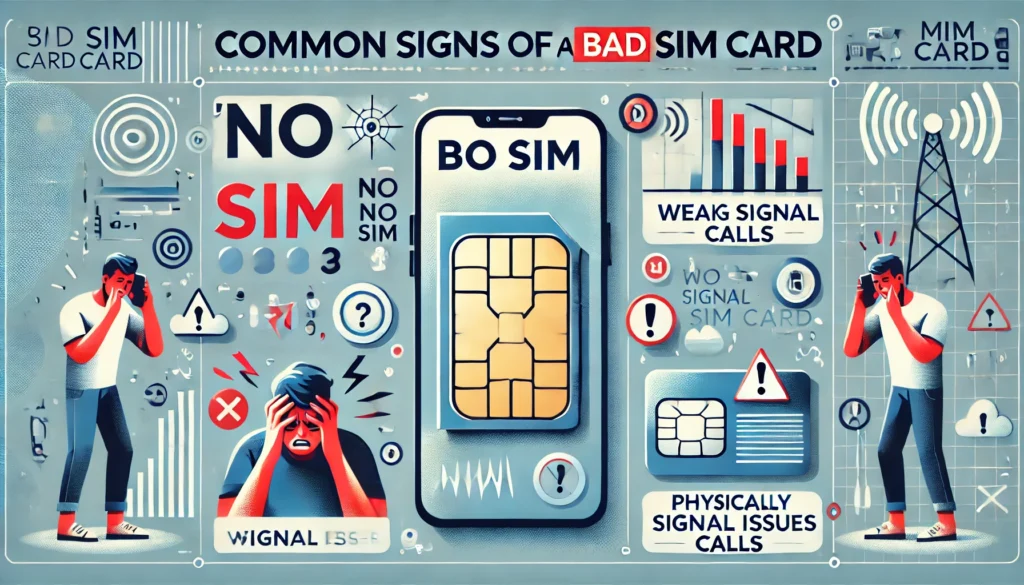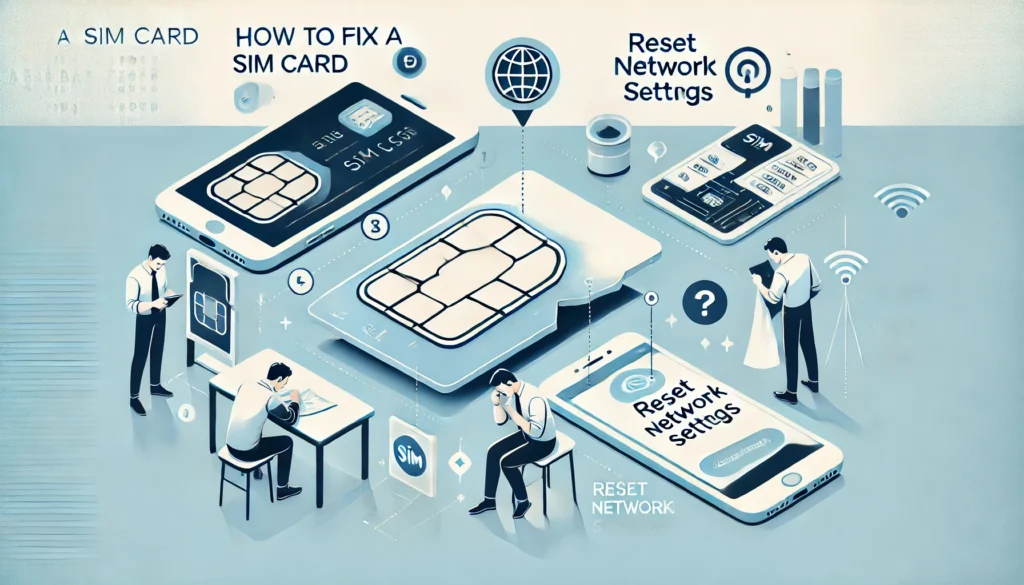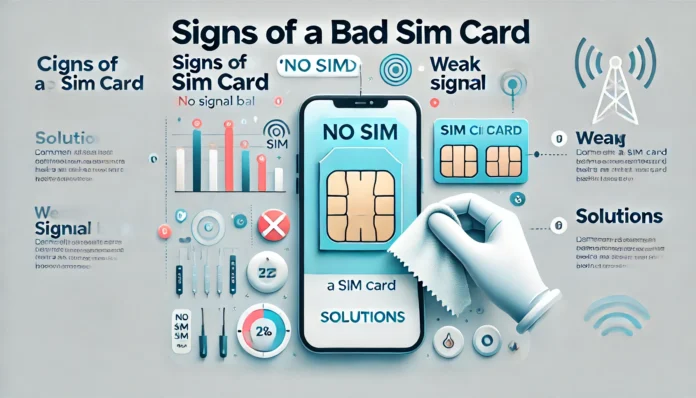Your SIM card serves as an entry point to your phone’s communication with the outside world, which allows you to make calls, send texts, and browse the internet. Although, what if your SIM card becomes faulty? Knowing the clues of a bad SIM card beforehand can spare you from the inconvenience of missed calls and disconnections. This guide will look at the most important signs of a bad SIM card, ways to solve the regular issues, and when it should be replaced entirely.
Common Signs of a Bad SIM Card
Some of the typical signs of a bad SIM card are such as the following: often signal loss, “No SIM” errors, call as well as the data issues, physical damage, or irregular glitches.
Frequent Loss of Signal
You can fix the SIM card problem if your phone always has the dropped signal, even in the places where you always have a good signal. While network failures or location-related problems can lead to this, the SIM card with defects is one of the major reasons for it.
“No SIM” or “SIM Card Not Detected” Error
Getting an error message like “No SIM” or “SIM card not detected” is a frequent warning sign that a SIM card is misbehaving. This might indicate that the card is not in the right position, it is damaged, or its time is over.
Difficulty Making or Receiving Calls
A problem with the SIM card may cause your inability to make or receive phone calls. In case you observe that the calls made and calls that are missed or making sounds are erroneous, SIM card is a possible source of the problem.

Mobile Data Issues
Experiencing slow mobile data speeds or being unable to connect to the internet, in spite of having an active data plan, is still another common symptom of a defective SIM card.
Physical Damage
On your SIM card check for visible damages as examples of them include scratches, cracks, or discolorations. This will disable it work accordingly.
Error Messages or Phone Glitches
Phone glitches that seem to happen out of the blue like mic freezing during calls, failed message submissions, or display of errors on the screen can be caused by a defective SIM card.
Also Read: What Does JSP Mean on Snapchat? A Guide to Snapchat Slang
How to Fix a Bad SIM Card
To remedy a deteriorating SIM card, you may experience reseating, delicately cleaning, trying it on another device, data settings resets, or by speaking to your carrier for a replacement.
Reseat the SIM Card
Switch off your phone and remove the SIM card and then use a soft, lint-free cloth to very gently clean it. Insert the card back into place and check to make sure it is locked there.
Test the SIM Card in Another Device
You can easily determine the culprit by inserting your SIM card into a different device. If the problems still persist on the new phone, the SIM card must be the issue.
Reset Network Settings
In case you frequently experience connection problems, go to ‘Settings’ on your phone and reset the network settings. By doing so, it will revert back to its default settings and in turn might alleviate the problem.

Contact Your Carrier
If nothing works, the next thing you can do is make contact with your network provider. They will be able to run diagnostics and if necessary replace the SIM card.
When to Replace Your SIM Card
After testing all possible ways to fix the problem with the SIM card, if you are still facing an issue then you must replace your SIM card. Most carriers will give you new sim cards free of cost or for a very low price. The process is simple and the procedure is really quick.
FAQs
Q. Can a Bad SIM Card Cause My Phone to Stop Working?
Yes, a bad SIM card can result in problems such as weak connection, inability to initiate a call, or very slow data sharing. Nonetheless, the device still can be used for other purposes apart from calling since it just not be connected to the cellular network.
Q. How Long Do SIM Cards Last?
Even though SIM cards are long-lasting, they can be broken if there is no care taken. A SIM card generally has a lifetime of 5-10 years if you treat it well. The main reasons for a shorter life cycle of a SIM card are physical damage, frequent removal, or getting wet.
Q. Can I Fix a Damaged SIM Card Myself?
By the way, the minor problems like the dirt on the SIM card can be removed with a damp cotton swab. Nevertheless, if it is physically damaged or cracked or has deep scratches, it is hardly possible to repair the card. The only way to solve these issues is to change the card.
Q. Why Does My SIM Card Work in Another Phone but Not Mine?
If the SIM card works in another device, there is a chance the problem is the phone itself. Look for any kind of damage to your SIM tray and any software issues that may be causing the problem. Are other users experiencing a down time as well?
Q. How Do I Get a Replacement SIM Card?
The first step to getting a new SIM card is to contact your mobile carrier. Either you may revisit a local shop or else you could place a request for a new card online. Also, be ready to provide identification for security.
Conclusion
Having a bad SIM card can be a very annoying and disastrous scenario, especially in situations where being connected is a must. But discovering the problem early can save you from a lot of headaches. Signal loss, error messages, and the inability to make calls are some of the most common issues that prevent a phone from operating properly and can be tackled promptly so the phone stays functional. If by chance you feel the SIM card is not working well, do not hold back on following the troubleshooting steps or on communicating with your carrier for further actions.
Still unsure about your SIM card? Drop your questions in the comments—we’re here to help!
Also Read: Do Architects Add Security Cameras to Commercial Buildings?


